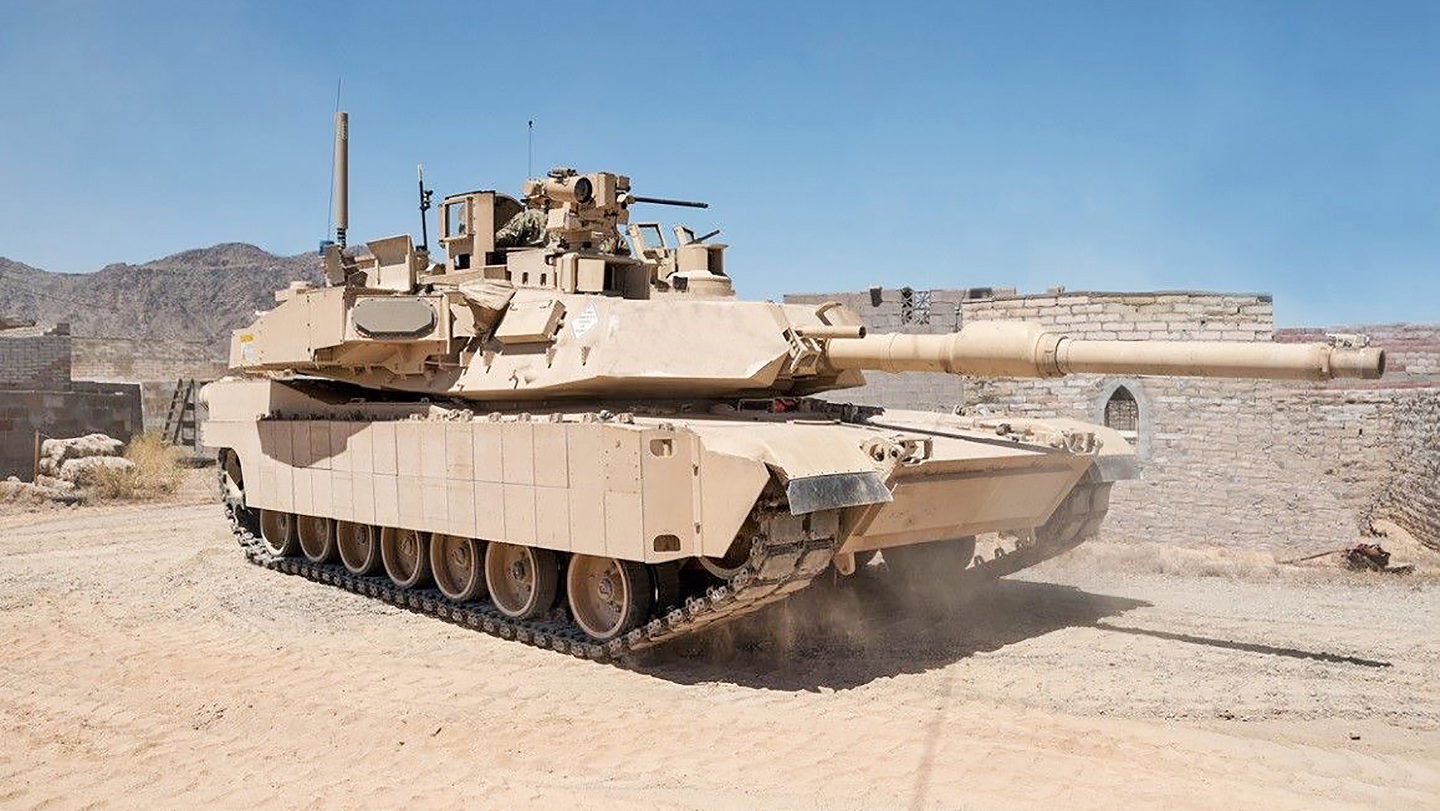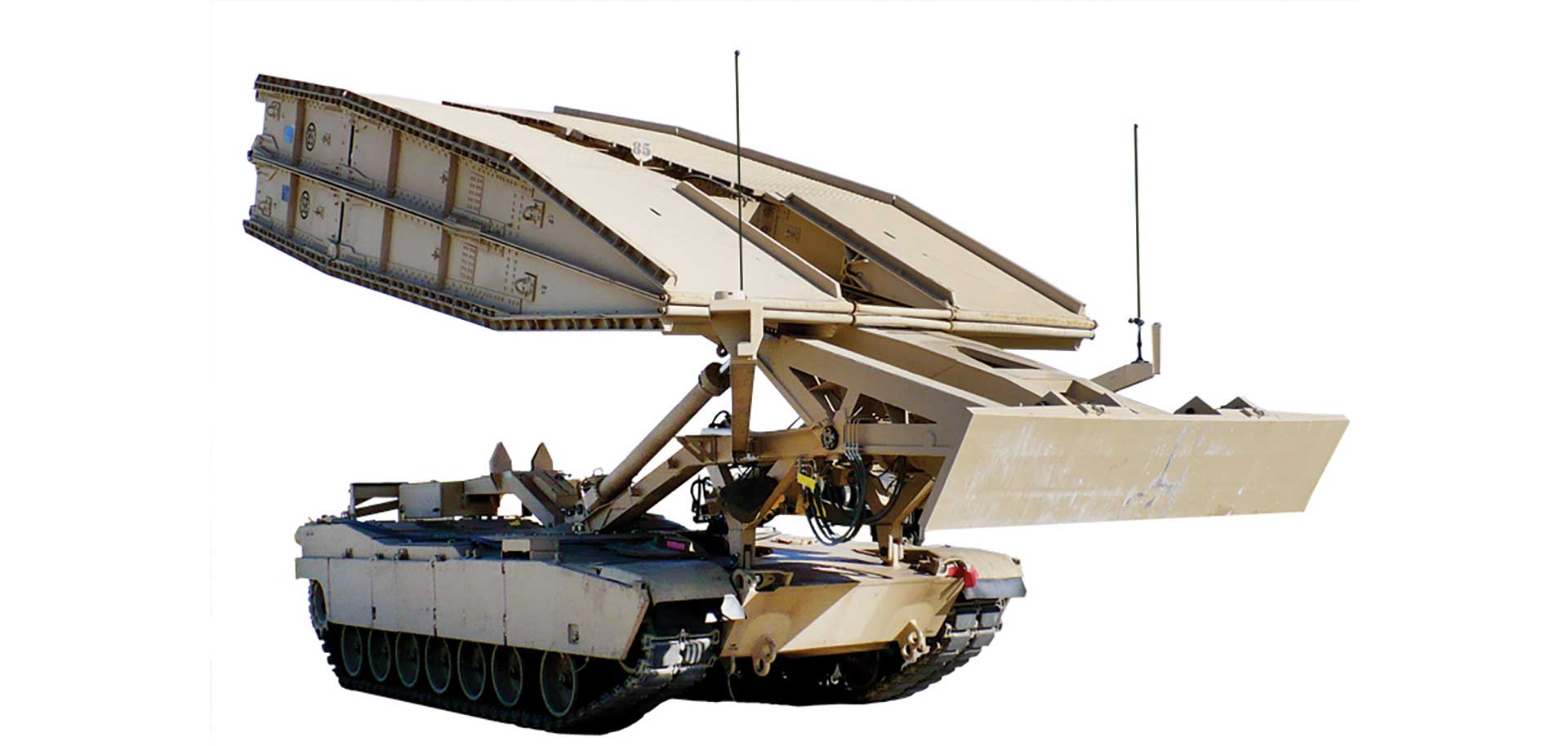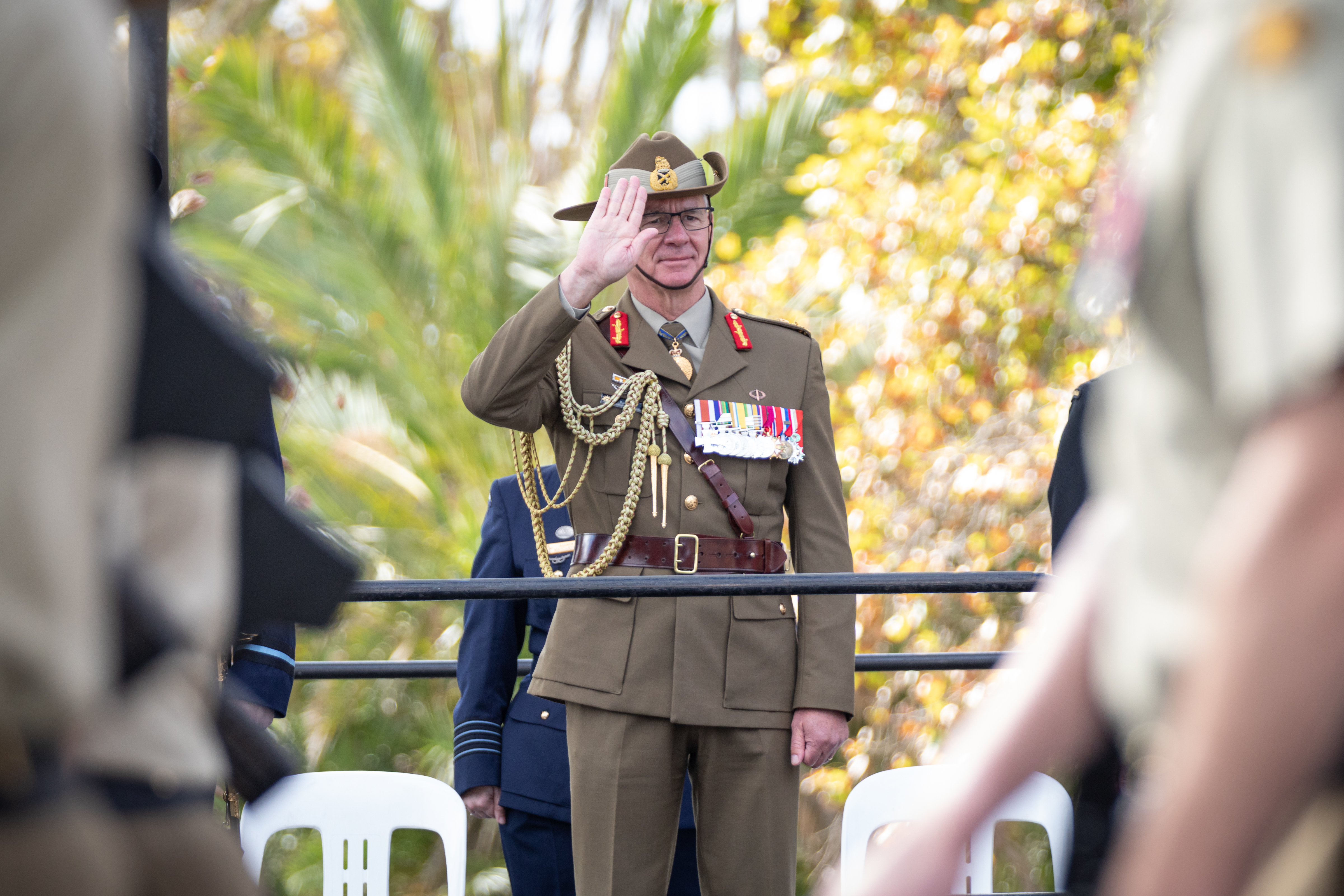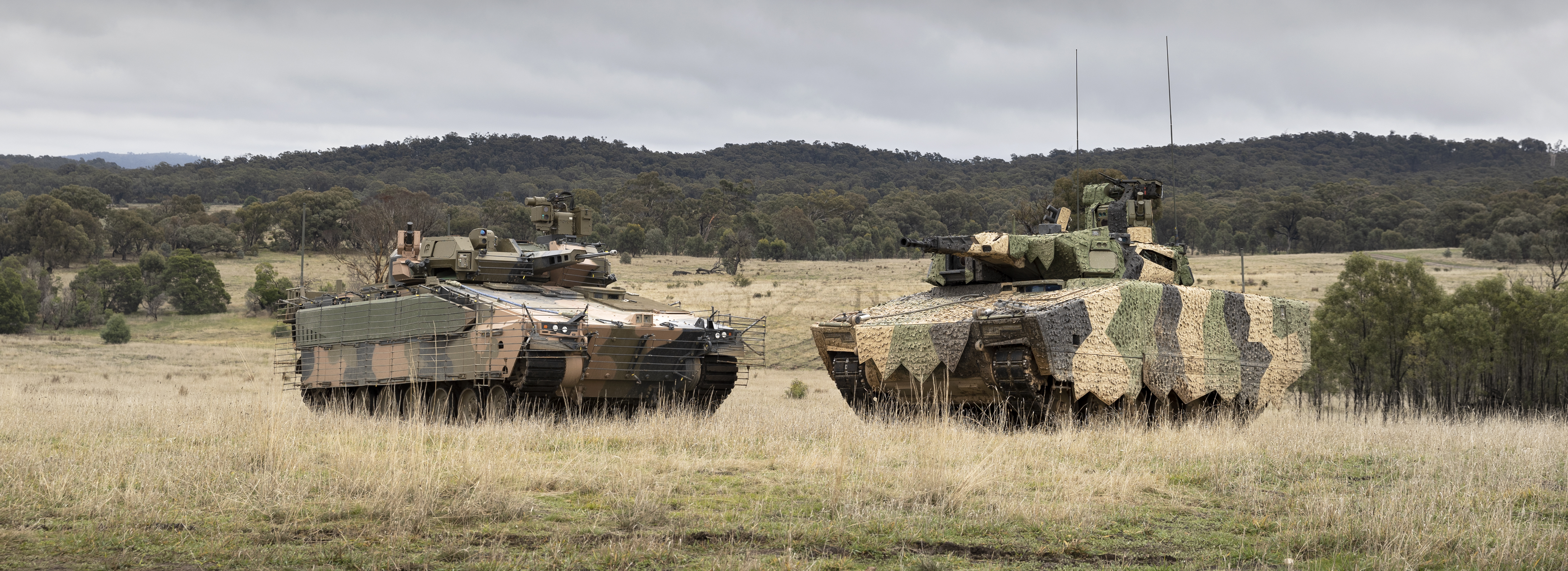Australia will modernize its land warfare capabilities under a roughly $2.5-billion deal that will provide its army with 75 M1A2 SEPv3 Abrams tanks, together with armored support vehicles. The decision, announced today, continues a significant spending spree on behalf of the Australian Defense Force (ADF), including plans to introduce nuclear-powered attack submarines, as well as hypersonic weapons and advanced air combat drones.
The new Abrams tanks are being procured under the Main Battle Tank Upgrade, formally known as LAND 907 Phase 2, while the Combat Engineering Vehicle (LAND 8160 Phase 1) will deliver 29 M1150 Assault Breacher Vehicles, 17 M1074 Joint Assault Bridge Vehicles, plus an additional six M88A2 Armored Recovery Vehicles, joining 13 already in service. The U.S. government approved the sale of these new vehicles to Australia via Foreign Military Sales channels in April last year.

The M1A2 SEPv3 — or System Enhancement Program version 3 — was developed by the U.S. Army to address lessons learned during fighting in Operation Iraqi Freedom and it rectifies space, weight, and power issues, as well as enhancing overall survivability. Specific changes include increased electrical power, vehicle health management systems, the Israeli-made Trophy active protection system, integrated counter-improvised explosive device (IED) protection, a new auxiliary power unit, and embedded training aids. The U.S. Army describes it as is “the most reliable Abrams tank ever produced.”
In terms of armament, the SEPv3 adds a ‘smart’ gun that can fire programmable munitions, using an ammunition datalink. There is also a new Common Remotely Operated Weapon Station (CROWS) that combines a sensor suite with a machine gun.

The M1A2 SEPv3 represents an advance over the Australian Army’s current M1A1 (AIM) variants, 59 of which were acquired second-hand from the U.S. Army and Marine Corps in 2006. These superseded Cold War-era Leopard 1s.
It’s reported that the M1A2 SEPv3 will replace the earlier vehicles directly, although previous plans had included enlarging the overall Abrams fleet to 90 tanks. The original approval from the U.S. State Department noted that “the M1A2 SEPv3 Main Battle Tanks will upgrade the current Australian fleet of M1A1 SA tanks with no changes to Royal Australian Armored Corps force structure.” Australian Army M1A1s are currently operated by three Armored Cavalry Regiments in Adelaide, Brisbane, and Townsville.

“The M1A2 Abrams will incorporate the latest developments in Australian sovereign defense capabilities, including command, control, communications, computers, and intelligence systems, and benefit from the intended manufacture of tank ammunition in Australia,” Australia’s Minister for Defense, Peter Dutton said. “The introduction of the new M1A2 vehicles will take advantage of the existing support infrastructure, with significant investment in Australian industry continuing in the areas of sustainment, simulation, and training.”
“Teamed with the Infantry Fighting Vehicle, Combat Engineering Vehicles, and self-propelled howitzers, the new Abrams will give our soldiers the best possibility of success and protection from harm,” Dutton added.
While the M88A2 Armored Recovery Vehicle is already established in Australian Army service, the M1150 Assault Breacher Vehicle and 17 M1074 Joint Assault Bridge Vehicle will provide new capabilities for the ADF. The M1150 is used primarily to clear mines and explosives and the M1074 provides a vehicle-launched bridge that allows assault force vehicles to cross rivers and other water obstacles. The M1150 and M1074 are based on the M1 Abrams chassis, while the older M88A2 uses a bespoke chassis first developed in the mid-1960s and drawing upon earlier tank designs.


Meanwhile, the Infantry Fighting Vehicle mentioned by Dutton is part of a separate program, LAND 400 Phase 3, which aims to acquire up to 450 new tracked armored vehicles to replace the Australian Army’s veteran M113 armored personnel carriers. Contenders for the new IFV are the Rheinmetall KF41 Lynx and Hanwha’s AS21 Redback.
Overall, Canberra is putting significant resources into overhauling the Australian Defense Force’s land capabilities as it reconfigures to face the challenges of potential future conflict in the Asia Pacific region.
“The main battle tank is at the core of the ADF’s Combined Arms Fighting System, which includes infantry, artillery, communications, engineers, attack helicopters and logistics,” said Lt. Gen. Rick Burr, the senior officer in the Australian Army.

“The M1A2 SEPv3 Abrams protection, accurate and lethal fire, mobility and situational awareness cannot be delivered by any other platform,” Burr concluded. “There are no other current or emerging technologies — or combination of technologies — that can yet deliver the capability currently provided by a main battle tank.”
Plans call for the first of the new armored vehicles to be delivered to Australia in 2024, with initial operating capability planned for the following year.
While the new Abrams and supporting armored vehicles have been billed by the ADF as an essential element to its land combat capability, some have questioned whether heavy armor of this type is best suited to Australia’s potential requirements in the Asia-Pacific region.

Investing now in its land warfare capabilities suggests that Canberra is pivoting back to the Australian Army after having funded big-ticket programs covering air warfare, maritime platforms, and missiles, in recent years.
Programs such as the F-35 stealth fighter, new air warfare destroyers and submarines, and hypersonic missiles are clearly intended to enhance the ADF’s ability to counter potential Chinese military actions in the Asia Pacific, but the role of heavy armor in scenarios such as this is perhaps less clear.
As for other contingencies, it’s notable that neither the Australian Army’s existing M1A1 tanks nor the previous Leopard 1s, were ever deployed on operations, remaining unused during campaigns in Afghanistan and Iraq.

The utility of tanks for Australia remains a subject of intense debate, but the new M1A2s and their support vehicles are just part of the Australian Army’s ongoing modernization effort, which stresses heavier, tracked armored vehicles rather than lighter armor optimized for rapid deployment and mobility.
On top of the approximately $2.5 billion being spent on the tanks and support vehicles, Canberra expects to pay between $13 billion and $19 billion on Infantry Fighting Vehicles under LAND 400 Phase 3. The candidates in the running for this are also notably large and heavy vehicles, each Lynx weighing up to around 48.5 tons, while the Redback tips the scales at around 46 tons. A winner in this competition is likely to be announced later this year.

The Chief of Army, Lt. Gen. Burr states: “Because of their versatility, tanks can be used in a wide range of scenarios, environments, and levels of conflict in the region. This system is the only part of the ADF that can successfully operate in medium to high-threat land environments.”
However, the kind of armor-heavy Australian Army that’s now in the works is arguably not best-suited to counter-insurgency campaigns, let alone the types of urban warfare that have become much more common in recent years, and which have posed a particular challenge for tanks.
So heavy is the SEPv3 version of the Abrams that not only is it impossible to transport it using the ADF’s existing amphibious landing boats but there are reportedly also significant parts of northern Australia — where much military training takes place — that are too swampy and the roads too rudimentary to support the new tanks. The Trophy active protection system alone is said to add around 5,000 pounds of weight, with an overall weight, in combat, of 73.6 tons.

It’s also questionable to what degree tanks would be likely to play a role in any kind of military campaign in the Asia Pacific theater involving China, with most credible scenarios more likely to be dominated by air and sea platforms, as well as missiles. In the United States, meanwhile, efforts are being made to return to the concept of a light tank to provide additional firepower for airborne and dismounted infantry brigades, as part of developing a doctrine that’s based on a potential conflict with a ‘great power’ adversary like China or Russia.
It’s also possible that Australia’s move to reconstitute its Abrams fleet is something of an interim action, enhancing current capabilities until a viable successor to the M1 emerges. The new M1A2 SEPv3 is, as Declan Sullivan of the Australian Strategic Policy Institute think-tank describes it, “fast, powerful, reliable and overkill and overweight for Australia’s needs, with little room to maneuver for future developments.”
The new fleet of tanks is expected to remain in service until sometime around the 2040s, after which Australia might reappraise its armored requirements and perhaps start to look at a doctrinal shift. This might involve lighter tanks and fighting vehicles, or even unmanned or optionally manned platforms. By then, defense planners in Canberra are also likely to have a better idea of the kinds of threats that the ADF is likely to face in the Asia Pacific region, and what role will best be played by ground forces and armor.
Contact the author: thomas@thedrive.com
